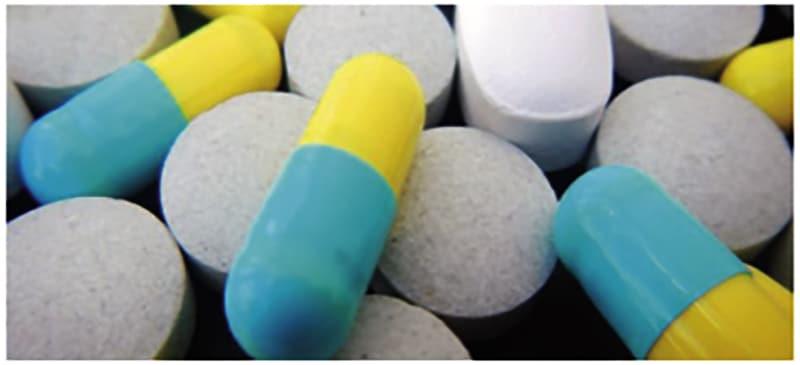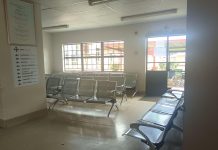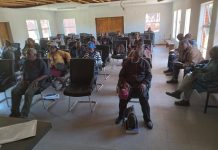Africa-Press – Lesotho. The advent of a new form of the anti-retroviral drug, Dolutegravir, that treats HIV and AIDS could be the one big break that people living with the pandemic and struggle with severe side effects of the old drug (TDF/3TC+DTG) have been waiting for.
Dolutegravir, which is highly recommended by the World Health Organisation (WHO), answers concerns of people whose bodies have become resistant to the use of TDF/3TC+DTG drug.
Limpho Molefe has been on anti-retro viral treatment for the past two years and, among others, experiences severe side effects including acute headaches.
When Molefe, 34, was diagonised with the HIV virus two years ago, she was immediately placed on ARV treatment but shortly thereafter, her body grew so weak that she was forced to stay in bed for months on end as she was often nauseous and dizzy.
Then she had an irritating ear infection accompanied by endless nightmares took a toll on her already barely adequate sleep. She is adamant if she had any other choice or had she not been under the strict supervision of her mother whose eagle eyes never missed anything, she would have long discarded the ARV drugs.
“After taking the medication, I frequently threw up and developed irritating skin problems which made me less keen to interact with other people.
I withdrew into a self-induced recluse and meanwhile my weight dropped drastically,” she says. In spite of the distresses, Molefe’s persistent use of ARVs paid off and the horrible side-effects soon diminished.
Her immune system has since improved, so has her CD4 Count also. “I now look and feel healthy because I am responding well to treatment,” she says with a big smile.
Although her viral load is not completely suppressed, she is certain that eventually she will reach that stage. “Every now and again I still experience some uncomfortable side effects but I have learnt to stomach them and that helps me to have peace.
I have even gained some weight too. “Although the ARV treatment has unbearable side effects, its impact on my overall health is truly positive and I am hopeful that with time, even my viral load will be fully suppressed,” she states.
Not everyone living with the virus is as lucky as Molefe to have a supportive system that ensures they continue taking their medication despite all the challenges entailed.
Most people quit because they cannot withstand the side effects, putting their lives at the risk, while others actually lose the fight due to failure to adhere to proper treatment.
Dolutegravir drug is said to be an integrase inhibitor with high potency, excellent tolerability, high barrier to resistance and also has rapid viral suppression qualities which make it a is desirable fast-track tool towards WHO’s 90 90 90 target.
WHO’s 90 90 90 target aims that by 2020, at least 90 percent of Lesotho’s population would have tested and known their status, and 90 percent of the tested would be on medication while 90 percent of those on medication would have their viral load suppressed.
Logistics manager at the National Drug Service Organisation (NDSO) Thejane Nkome says Dolutegravir is more effective at suppressing viral load and has fewer side effects compared to the current ARV treatment.
If approved in Lesotho, Nkome says the new drug will be used as a first-line treatment, which a person will be put on after testing HIV positive. He adds people with new infections will be put on the new regime, adding however that those already on ARV treatment will have to go through medical screening before they can switch.
“A person can transit HIV if the ARVs they are already taking do not benefit them anymore, that could be if the person is experiencing extreme side effects of the treatment they are taking or have become resistant to it,” he adds.
Nkome says the new drug is cheaper and good at suppressing the HIV virus while also having fewer side effects. He notes that the government will decide whether or not to implement the use of the recommended drug in Lesotho.
All these emerged during an ARV optimisation seminar hosted by the Pharmaceutical Society of Lesotho (PSL) this week to teach about the newly introduced Dolutegravir drug.
Lesotho’s efforts to curb the spread of HIV got a shot in the arm in the past weeks following reports that the risk of passing on the HIV virus is significantly eliminated by effective treatment.
The landmark study should spur experts and the government to encourage more patients to go on anti-retroviral treatment. Lesotho has the second highest HIV prevalence rate in the world with 25 percent of the population, or one in four people in the country, living with HIV.
A WHO briefing of 2018 shows that since January 2017, Brazil has recommended a DTG-based regimen in first-line for ART-naïve patients. The use of DTG as a third-line option to replace Raltegravir has been recommended since 2016.
It shows that currently, more than 50 000 people living with HIV are taking the regimen of TDF/3TC + DTG in first-line (and another 30 000 are using DTG-containing regimens in third-line).
“Approximately 8000 new patients are initiating TDF/3TC+DTG-containing regimens per month.
“A national online pharmacovigilance system to record DTG-associated AEs has been implemented since April 2017 with support from WHO.
Preliminary results, as of December 2017, are reassuring: they reveal that approximately 2% of people on DTG reported an AE, and nearly all AEs (89%) were rated as mild.
A total of 149 individuals were switched to another regimen due to AEs during this period. The reactions reported in Brazil are similar to the reactions recorded in clinical trials; they include gastro-intestinal symptoms, skin reactions, and insomnia.
No IRIS was reported. “From 3 months of treatment, the proportion of people living with HIV treated with a DTG-based regimen with undetectable viral load (‹50 copies/mL) were more than 81%, reaching 88% at 10–11 months of treatment,” reads the briefing.
It further noted that at 12 months of ART initiation, 88% of DTG-based treated individuals presented a viral load ‹50copies/mL, compared to 83% with EFV-based regimens.
Suppression was also faster among those on DTG-based regimens compared to EFV-based regimens – 81% of individuals who started with a DTG-based regimen presented a viral load below 50 copies/mL after 3 months of treatment, compared to 61% for those on an EFV-based regimen.
“Botswana introduced DTG-based first-line ART for all adults, including pregnant women, in May 2016.
“Approximately 60 000 people living with HIV are currently receiving a DTG-based regimen, including TDF/3TC in Botswana: 50 000 on first-line treatment and 10 000 treatment switches. Unlike Brazil, the Botswana programme is using DTG in people with TB receiving rifampin treatment and among pregnant and breastfeeding women.
“Overall, more than 90% of people living with HIV on a TDF/3TC+ DTG have achieved full virologic suppression on DTG by 6 months, with less than 1% reporting AEs, usually gastro-intestinal disturbance.
Preliminary data reveals that approximately 300 people living with HIV have completed TB treatment while taking a double-dose DTG-based regimen. No difference in AE incidence has been observed with the increased dose of DTG. Of 53 DTG failures detected, only 3 patients were found to have integrase mutations (‹0.75%),” the briefing shows.
AIDS Health Foundation (AHF) country programmes manager ’Mapaballo Mile told this paper that since the introduction of the test and treat strategy in 2016, where HIV positive people take treatment as prevention (TasP) soon after testing positive to HIV, more HIV positive people who have been on treatment and adhered to it for six months and more have reached a suppression stage whereby their viral load is undetected.
Mile says the virus gets so suppressed that it can only be detected thorough blood tests. “The risk of transmission of the disease is significantly reduced by 96%.
“This means that the 4% risk of infection is still be available and transmission can happen depending on an individual’s body response toward treatment and contact with the infected person’s body fluids, hence it is important to stay protected from transmission at all times,” Mile says.
She describes the suppression stage as a big achievement towards HIV/AIDS eradication as more people lead a healthy life without or with less new infections.
“This is a big achievement compared to 10 years back where people were only put on treatment when their CD4 was under 250 and later increased to 500.
“It was later discovered that most people die before their CD4 count reached 250 and 500 while others started the treatment with weak bodies and struggled to withstand the side effects of the treatment therefore reaching a stage where suppressing their viral load was very hard,” she says.
Mile says the suppression stage saves a lot of people from infection and also saves money for treating new infections. “Currently, the lifespan of an HIV positive person who leads a healthy life and takes medication accordingly is equal to that of a HIV negative person who similarly leads a healthy life,” she notes.
She, however, emphases that it is imperative for people whose viral load is suppressed to keep on taking ARVs and avoid engaging in unprotected sex. Re-infection she says is dangerous and can be more active than the virus the person is already treating.
She notes that not taking medication properly and not eating well due to poverty are some of the challenges that stop people from reaching a point where their viral load is undetectable.
The ministry of health and social welfare and other stakeholders have gone beyond expectations to break the stigma and discrimination that surrounds the disease and is determined to meet the global 90-90-90 target while also at the same time enabling the environment and providing social support for those affected and infected with HIV/AIDS.
For More News And Analysis About Lesotho Follow Africa-Press






